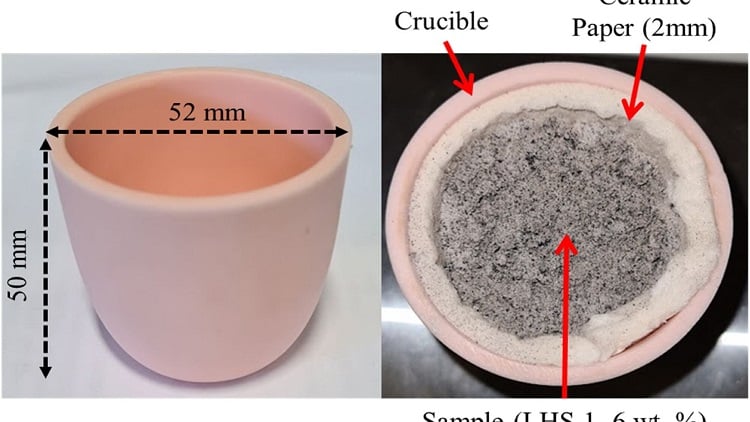S. Himmelstein | June 21, 2023
 A crucible that could be used to extract water from lunar regolith. Source: Acta Astronautica 209 (2023)
A crucible that could be used to extract water from lunar regolith. Source: Acta Astronautica 209 (2023)
Among the resources needed to support future lunar explorers and human settlements is a reliable water supply. As transporting a sufficient amount of water from Earth is expected to take a toll on mission logistics and fuel consumption, researchers from the Open University (U.K.) and the University of Central Florida have demonstrated the potential to rely on two resources at hand: microwave heating systems and Moon dust.
Water is locked in regolith — the material covering the lunar surface — at an estimated concentration of 100 ppm to 400 ppm, with the greatest abundance found in polar regions. Prospects for extracting this resource were examined by subjecting simulated regolith materials representative of the polar highlands and of the lunar mare or plains regions, mixed with deionized water, to low-power microwave heating.
The samples were placed in chambers replicating the pressure and temperature conditions of the lunar surface and heated for 25 minutes in 250 W microwave ovens. Over 50% of the water present in the plains regolith samples was extracted, and more than 67% of the water available in the highlands regolith was recovered. When heated for 35 minutes, up to 90% of the water could be extracted.
The results published in Acta Astronautica indicate that low-power microwave heating could be used for prospecting missions, with the technique able to extract large fractions of water ice regardless of the material composition. No word as of yet on the availability of green cheese as an accompaniment.
